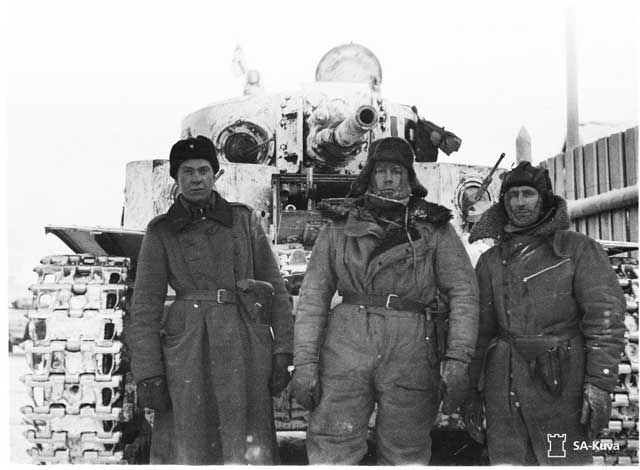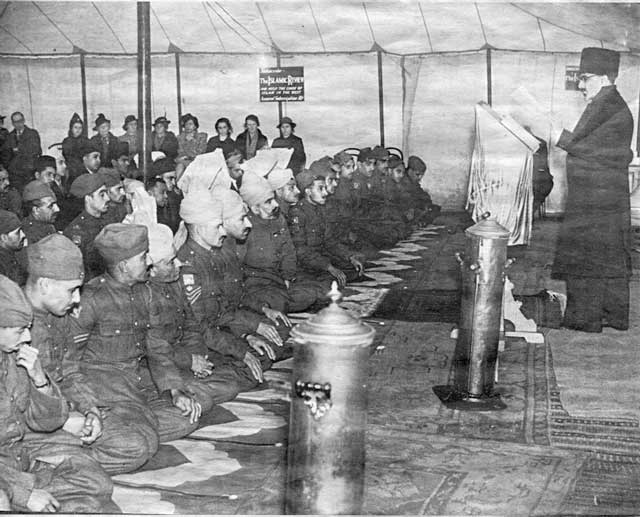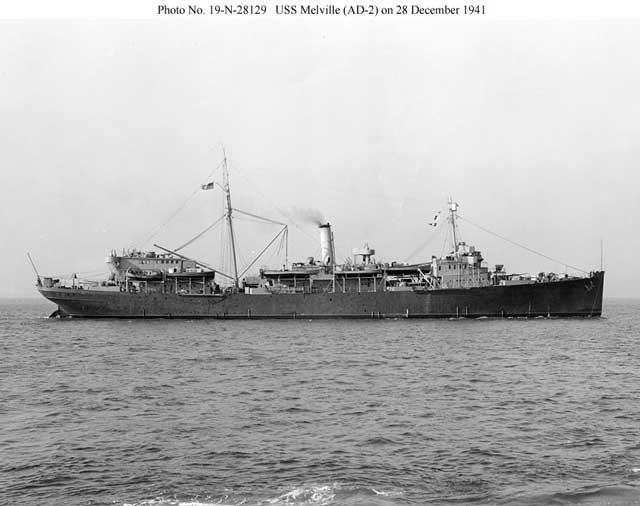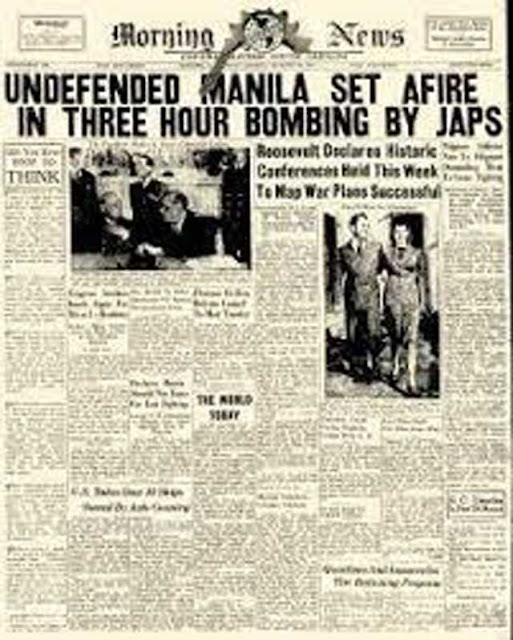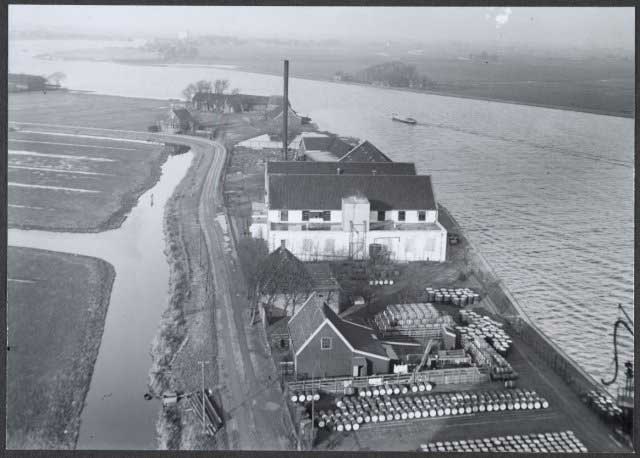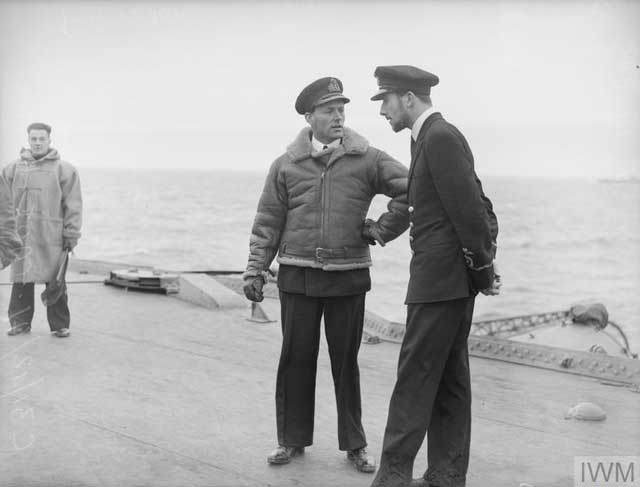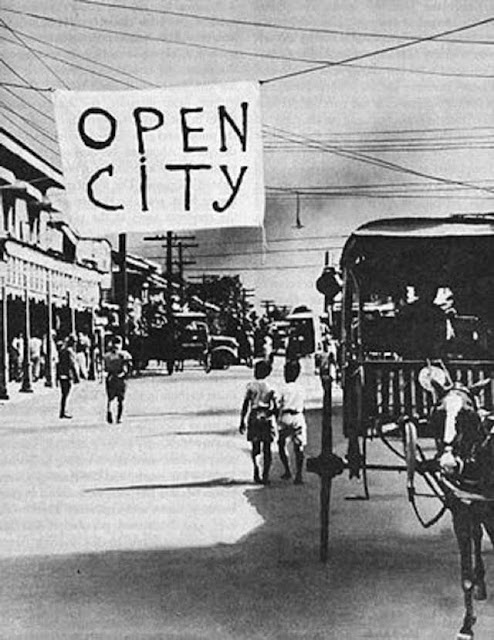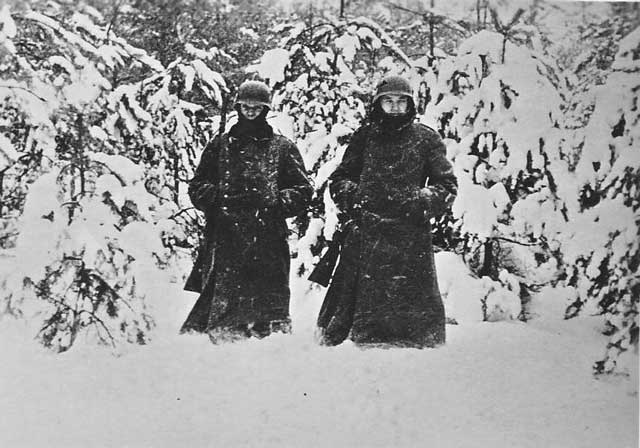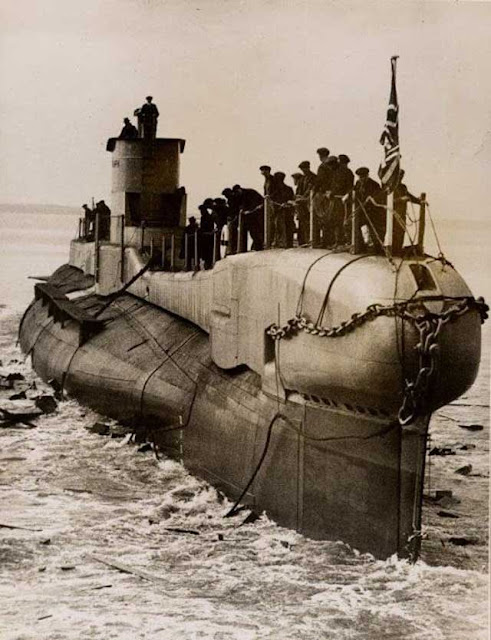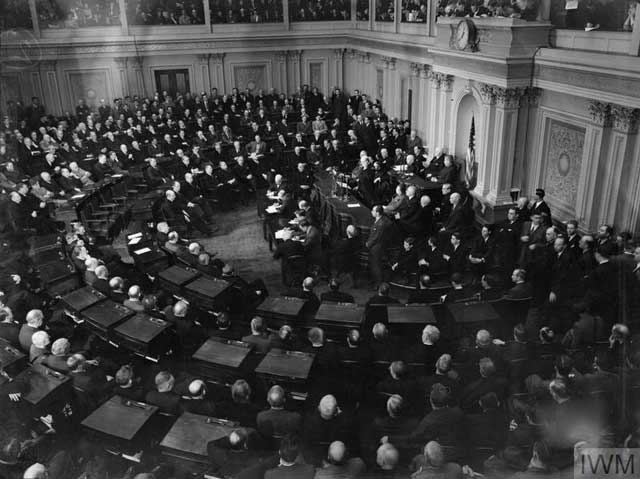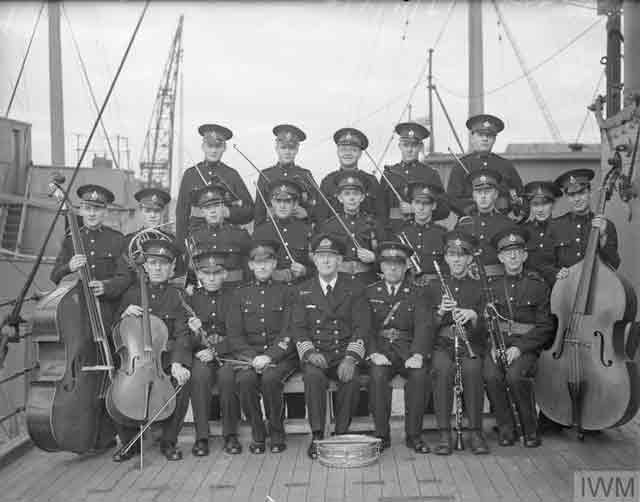Saturday 27 December 1941
 |
| Commandos in action during the Operation Archery raid on Vaagso, 27 December 1941. © IWM (N 530). |
Battle of the Pacific: While the Japanese have vague plans to use their submarines operating off of the west coast of the United States to shell cities, on
27 December 1941, they cancel those plans. Vice Admiral Shimizu Mitsumi, commander of the Advance Expeditionary Force (Sixth Fleet), decides that any gain would be minimal and simply invite retaliation. The submarines have been successful in generating widespread fear in California without loss, so some of the submarines are allowed to return to base to refuel and rearm. Today, I-25 spots 8684-ton US tanker Connecticut about ten nautical miles west of the mouth of the Columbia River (the boundary between the states of Oregon and Washington).
 |
| New Royal Navy fire-fighting equipment being demonstrated at Rosyth, 27 December 1941. Effective fire control was one of the secret reasons that the Allies saved so many ships during battles. © IWM (A 6660). |
In the Philippines, the Japanese continue to consolidate their troops at the Agno River as it prepares an offensive to take Manila. With Manila declared an open city, US Lieutenant General Douglas MacArthur works on preparing a redoubt in the Bataan Peninsula south of the city. The North Luzon Force, engaged in a delaying action, retreats to a line between Tarlac and Cabanatuan. In southern Luzon, the Japanese take Candelaria, brushing aside the Filipino 53rd Infantry Regiment. The US Navy sends half a dozen PBY Catalina flying boats (Squadron 101) to attack Japanese shipping off Jolo Island and the Pasig River, but achieve little. Japanese Nell and Betty bombers based on Formosa also are in operation, attacking Allied shipping in the Pasig River and Manila Bay. They hit some small Filipino customs cutters and motorboats and sink US freighters Ethel Edwards (395 tons) and Canlaon (667 tons in Manila Bay.
 |
| "A wounded British officer being helped through the snow to a dressing station during the Vaagso Raid, Norway, 27 December 1941." © IWM (N 495). |
In Singapore, the British shake up their command, replacing Commander-in-Chief of the British Far East Command Air Chief Marshal Sir Robert Brooke-Popham with Lieutenant General Henry Pownall. Brooke-Popham, the first RAF commander-in-chief of a joint command during a world conflict, returns to London for further assignments. The position of the commander-in-chief is largely symbolic, as Royal Navy units and civil servants report through different chains of command. However, Operation Matador, the current defensive strategy on the Malay Peninsula, is Brooke-Popham's brainchild. Meanwhile, the Commonwealth troops dig in along the Pasig River, where some Americans scuttle their 1251-ton freighter Taurus.
With the Japanese now in possession of Hong Kong, US submarine Perch operates nearby and gets a little revenge. It torpedoes and sinks 7190-ton Japanese ammunition ship Nojima Maru southwest of the city.
 |
| British stretcher-bearers carry wounded during the raid on Vaagso on 27 December 1941. © IWM (N 456). |
In Burma, the Japanese continue to occupy the southernmost portion of the country while the Allies squabble in Rangoon over the "Tulsa Incident." US General John Magruder is technically in charge of Lend-Lease shipments in Rangoon but has been outranked by naive newcomer Major General George Brett (Magruder, incidentally, later becomes a founder of the civilian Central Intelligence Agency (CIA) after the war). Magruder sends a detailed message to the War Department in D.C. explaining British attempts to divert Lend-Lease supplies intended for the Chinese that were brought to Burma by USS Tulsa (hence the name "Tulsa Incident"). This memo ultimately comes to Secretary of State Cordell Hull's attention. He personally sorts matters out by affirming that the supplies belong to the Chinese and not the British. Based on these assurances, Chinese leader Chiang Kai-shek backs off from his threats to withdraw all Chinese troops from Burma and good relations are restored between the United States and China. However, Chiang remains furious with the British throughout the remainder of the war. The Tulsa Incident provides a huge opening wedge for United States influence in the region.
 |
| "An Indian soldier reading an inscription on a stone amongst ruins at Cyrene in the Western Desert, 27 December 1941" © IWM (E 7346). |
Battle of the Mediterranean: The Afrika Korps counterattacks on the Gazala Line. In a brilliant flanking maneuver, German panzers surprise the British 22nd Armored Brigade at El Haseia and destroy its tank force. This protects Ajdabiya and stabilizes the German position. However, Lieutenant General Erwin Rommel does not follow this success up with further attacks. Instead, he authorizes a retreat to a defensive line anchored at El Agheila while he awaits supplies and reinforces from Tripoli.
 |
| Japanese bombing sets fire to Manila's Walled City, Intramuros, Manila, Philippines. Visible is San Juan de Dios Hospital (domed building). Santo Domingo Church is burned in this raid, leaving a roofless ruin (International News via Flickr). |
Eastern Front: The weather remains bitterly cold on the Moscow Front, with temperatures hitting -15 °F during the daytime and -25 °F overnight. The snow also is a major problem, as indicated in the 27 December 1941 daily report from the Army Group Center journal:
All movement burdened by the enormous snowdrifts. Rail transport is stalled for the same reason, and the loss of locomotives due to freezing increases the problem. The shifting of the few, available reserves is stopped by the snow. For the above reasons, all time schedules are rendered meaningless. The Russians must contend with the same difficulties, but their mobile, well-equipped cavalry, ski, and sled units (the latter used to bring rations and fodder to the cavalry and to transport infantry) give them tactical advantages that, together with larger manpower reserves, they are now trying to exploit operationally.
It is often claimed that the weather is only said to have affected the Germans and not the Soviet troops. Contemporaneous accounts such as the above show that the Germans fully understand that the Red Army is laboring under the same constraints - they are just handling them better.
 |
| German patrol boat V-5102, sunk by Royal Navy destroyers Offa and Chiddingfold as part of Operation Archery off Norway on 27 December 1941. Some sources place this sinking on 24 December. |
The weather is not quite as extreme in the Crimea, but the Germans are under even greater pressure there. At 13:00, Lieutenant General Hans Graf von Sponeck's 42nd Army Corps mounts a counterattack against the Soviet landings made on 26 December near Kerch. The Red Army soldiers spot the Germans coming (the area is flat, treeless, and offers no cover) and deploy their three T-26 tanks and several infantry companies. The Germans knock out the tanks using an overworked 3.7 cm Pak 36 anti-tank gun which fires an epic 42 rounds, but the spirited Red Army response enables the Soviet troops to survive the night after they retreat into their bridgehead. The Germans hoped to eliminate the invading group today, but plan to attack again early on the 28th.
 |
| German prisoners (including Quislings) carry wounded on the island of Vaagso during the Command raid (Operation Archery) of 27 December 1941. © IWM (N 490). |
Special Forces: British No. 3 Commando conducts Operation Archery, a raid on the island of Vågsøy (Vaagso), Norway. Following a shattering naval bombardment, 570 Commandos come ashore with plans to destroy the island's businesses. Unknown to the British, an experienced Gebirgsjäger (mountain rangers) unit is on leave on the island, and a bitter fight breaks out. The Commandos achieve their main objective, the destruction of four factories and military installations, but they suffer 17 killed and 53 wounded. In addition, the Germans shoot down eight RAF aircraft. As the British withdraw, they take with them over 70 partisans and also some captured Quislings. Operation Archery is conducted in conjunction with Operation Anklet in the Lofoten Islands, which began on 26 December and concludes today. Operation Anklet proceeds virtually with no opposition, as opposed to the fierce fighting involved today in Operation Archery.
 |
| On 27 December 1941, British troops embark onto HMS Prince Leopold after the raid on Vaagso. |
The British withdraw all of their surviving forces from both Commando operations without incident and lose no ships, but it is a much sharper engagement than they were expecting. On the German side, Operations Anklet and Archery scare Adolf Hitler into committing heavy forces to Norway in the mistaken belief that the British intend to invade the country and not just conduct raids on it. This is considered a great German strategic error, as Norway remains over-garrisoned for the remainder of the war. There are many surviving fortifications in the remote areas of the Norwegian coast to this day due to the effects of these raids.
Australian/US Relations: Australian Prime Minister John Curtin releases his New Year's message (a little early) on 27 December 1941. Unlike one of his recent predecessors (and also eventual successors), Robert Menzies, who followed a distinctly Anglocentric policy, Curtin takes a different view. Curtin has a distinctly pragmatic (as opposed to a historical) view of where Australia's strategic future lies:
Without any inhibitions of any kind, I make it quite clear that Australia looks to America, free of any pangs as to our traditional links or kinship with the United Kingdom.
The United States already is organizing its defense of the southwest Pacific in Australia, and it remains very unclear if the Japanese will actually invade Australia.
American Homefront: US citizens begin to feel the first pinches of deprivation. Rubber is needed for the war effort, so private automobile tire sales are restricted.
 |
| Members of the Hearns Volunteer National Defense Corps spell the slogan “Remember Pearl Harbor” at a rally held on 14th St. between Fifth and Sixth Avenues in New York City, 27 December 1941. (AP Photo). |
December 1941December 1, 1941: Hitler Fires von RundstedtDecember 2, 1941: Climb Mount NiitakaDecember 3, 1941: Hints of Trouble in the PacificDecember 4, 1941: Soviets Plan CounteroffensiveDecember 5, 1941: Soviets Counterattack at KalininDecember 6, 1941: Soviet Counterattack at Moscow BroadensDecember 7, 1941: Japan Attacks Pearl HarborDecember 8, 1941: US Enters World War IIDecember 9, 1941: German Retreat At MoscowDecember 10, 1941: HMS Prince of Wales and Repulse SunkDecember 11, 1941: Hitler Declares War on the USDecember 12, 1941: Japanese in BurmaDecember 13, 1941: Battle of Cape BonDecember 14, 1941: Hitler Forbids WithdrawalsDecember 15, 1941: The Liepaja MassacreDecember 16, 1941: Japan Invades BorneoDecember 17, 1941: US Military ShakeupDecember 18, 1941: Hitler Lays Down the LawDecember 19, 1941: Brauchitsch Goes HomeDecember 20, 1941: Flying Tigers in ActionDecember 21, 1941: The Bogdanovka MassacreDecember 22, 1941: Major Japanese Landings North of ManilaDecember 23, 1941: Wake Island Falls to JapanDecember 24, 1941: Atrocities in Hong KongDecember 25, 1941: Japan Takes Hong KongDecember 26, 1941: Soviets Land in the CrimeaDecember 27, 1941: Commandos Raid NorwayDecember 28, 1941: Operation Anthropoid BeginsDecember 29, 1941: Soviet Landings at FeodosiaDecember 30, 1941: Race for BataanDecember 31, 1941: Nimitz in Charge2020
